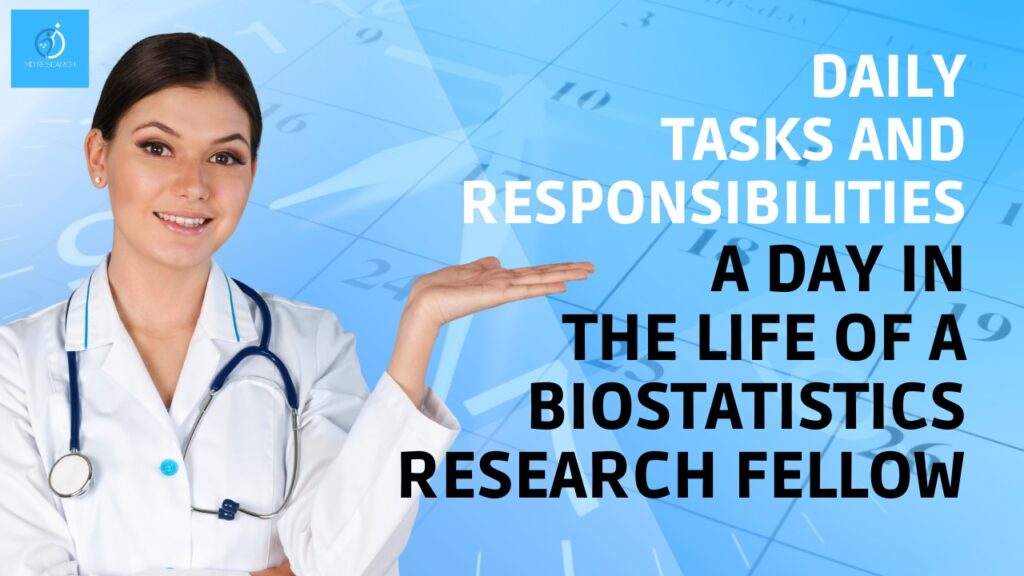
Morning Routine
- 8:00 AM – 9:00 AM: Arrive and Prepare
- Check your emails and calendar for any meetings or important deadlines.
- Review your to-do list and decide what needs to be done first.
Data Management and Analysis
- 9:00 AM – 12:00 PM: Data Handling
- Cleaning Data: Take raw data from sources like clinical trials or health records and fix any errors or inconsistencies. This involves using statistical software like R, SAS, or Python.
- Analyzing Data: Perform statistical analyses to understand the data. This might involve simple averages or more complex techniques.
- Keeping Records: Document everything you do so that others can understand and reproduce your work if needed.
Midday Break
- 12:00 PM – 1:00 PM: Lunch Break
- Take a break to eat and recharge. You might eat alone or with colleagues, often discussing ongoing projects or new ideas.
Research and Collaboration
- 1:00 PM – 3:00 PM: Research Activities
- Reading Research: Stay updated on the latest studies and findings in biostatistics by reading journal articles and research papers.
- Testing Ideas: Develop and test new hypotheses based on research questions. Design studies or experiments if necessary.
- Teamwork: Work with teams that include doctors, epidemiologists, and other researchers. Attend meetings to discuss progress and find solutions to research problems.
Meetings and Professional Development
- 3:00 PM – 4:00 PM: Meetings
- Team Meetings: Attend regular team meetings to share updates, present your findings, and get feedback.
- Mentorship Sessions: Meet with mentors or advisors to discuss your progress and career goals.
Reporting and Communication
- 4:00 PM – 5:00 PM: Reporting Results
- Writing Reports: Summarize your research findings in reports, including charts and graphs to illustrate the data.
- Preparing Manuscripts: Work on articles for submission to academic journals, ensuring the writing is clear and follows guidelines.
- Writing Grant Proposals: Help write proposals to secure funding for future research projects.
Evening Wrap-Up
- 5:00 PM – 6:00 PM: Wrap-Up and Planning
- Review what you accomplished during the day and update your to-do list.
- Plan the next day’s tasks, setting priorities and deadlines.
- Save and back up your work.
Continuous Learning and Improvement
- Evening: Professional Development
- Online Courses and Webinars: Take part in online courses or webinars to learn new statistical methods and tools.
- Networking: Connect with other professionals in the biostatistics field through social media, professional networks, and conferences.
Key Responsibilities
- Managing Data: Ensure the data is accurate, reliable, and kept confidential.
- Analyzing Data: Use the right statistical methods to analyze and interpret data.
- Team Collaboration: Work well with a team of different experts, providing statistical knowledge to various research projects.
- Communication: Explain complex statistical concepts and findings in simple terms through reports and presentations.
- Continuous Learning: Keep up with the latest developments in biostatistics and improve your skills regularly.
